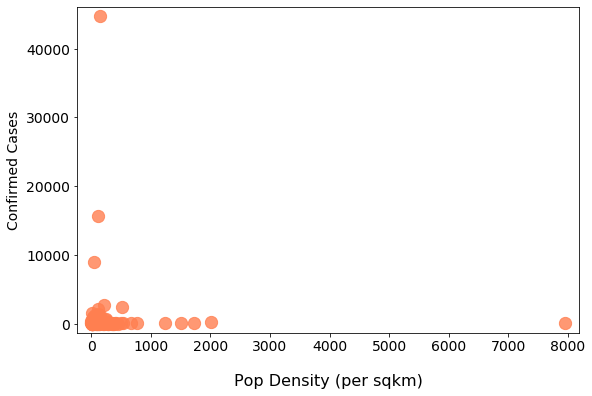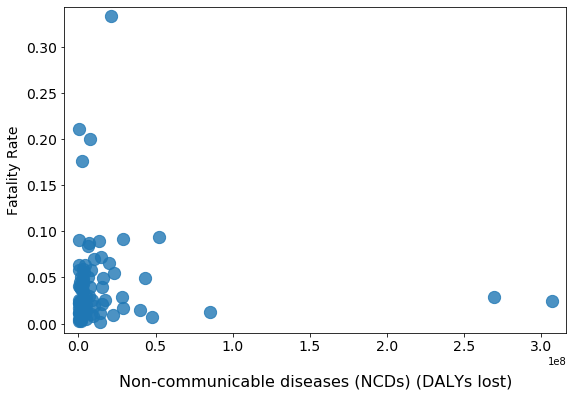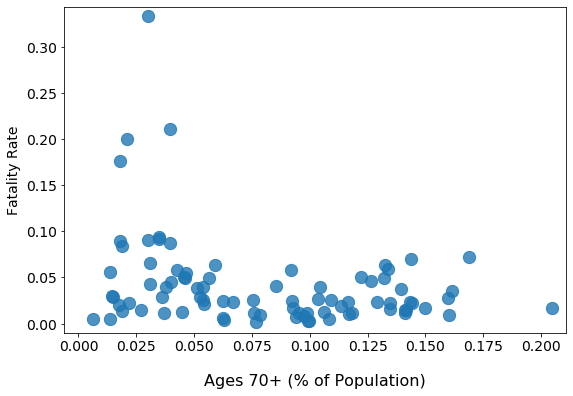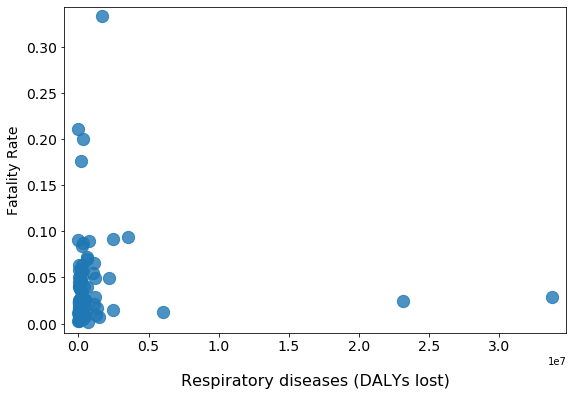Population & Health

When looking at the number of confirmed cases, one might consider population density. Confirmed cases in this chart were baselined at 21 days from the first confirmed case, after the disease had some time to spread. There does not seem to be a relationship between population density and the number of confirmed cases. The outlier in the lower right is Singapore; the outlier in the upper left is the U.S.

Prior health conditions, or Non-communicable Diseases (NCDs), are also believed to affect the severity of COVID-19, putting one's mortality at risk. NCDs are measured by Disability-Adjusted Life Years (DALYs) or the number of years lost to an NCD (country total). Fatality rate does not seem to be driven by NCDs. The outlier in the upper left is the Philippines.

Another early belief about COVID-19 was that it was particularly fatal for seniors. However, when comparing the senior population of countries (ages 70+) it does not correlate with a country's fatality rate. Senior age does not necessarily determine one's ability or inability to overcome a disease such as COVID-19.

Respiratory disease is a type of NCD. Based on the most severe symptoms of COVID-19, it seems to attack the lungs. People with weak respiratory systems might seem to be at a higher risk of fatality from COVID-19. However, this early data does not show a clear relationship between respiratory disease and COVID-19 fatality rates. The outliers in the lower right are India and China.